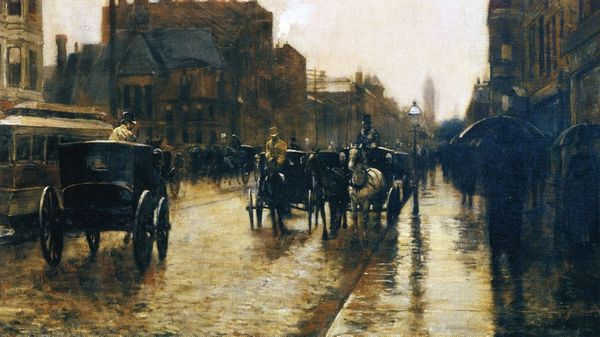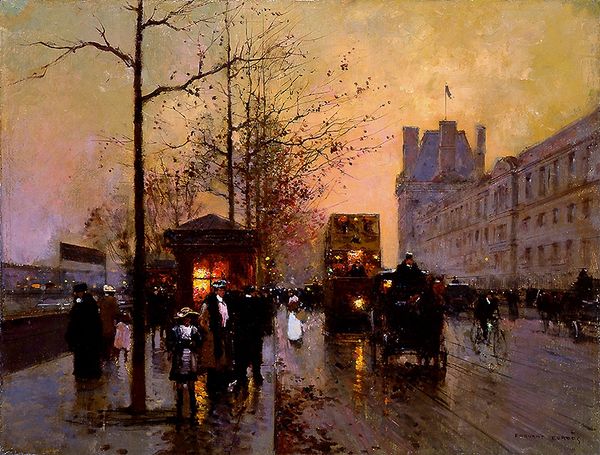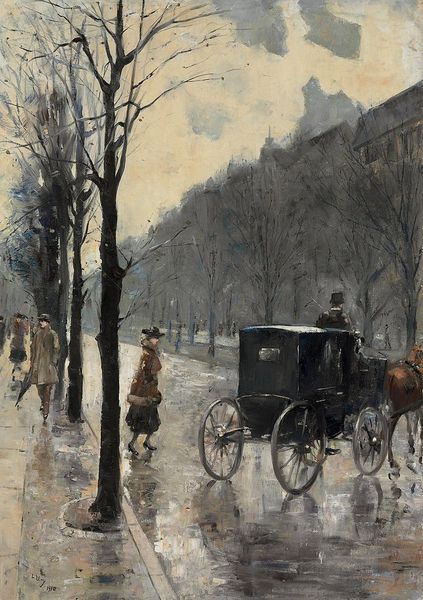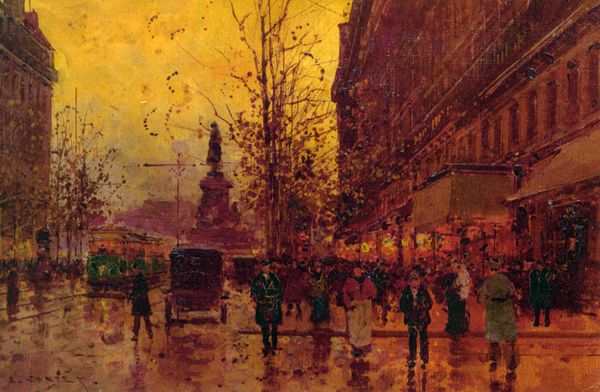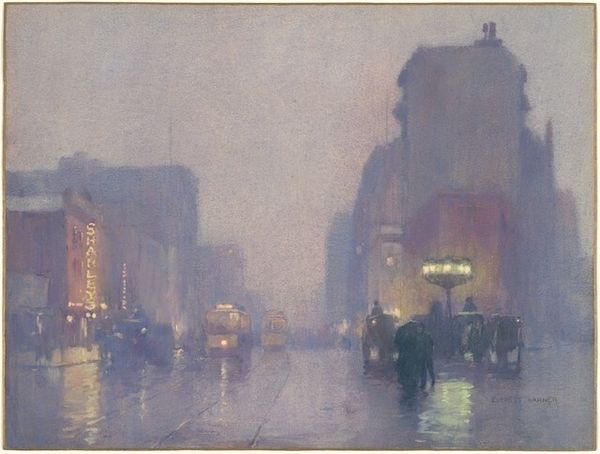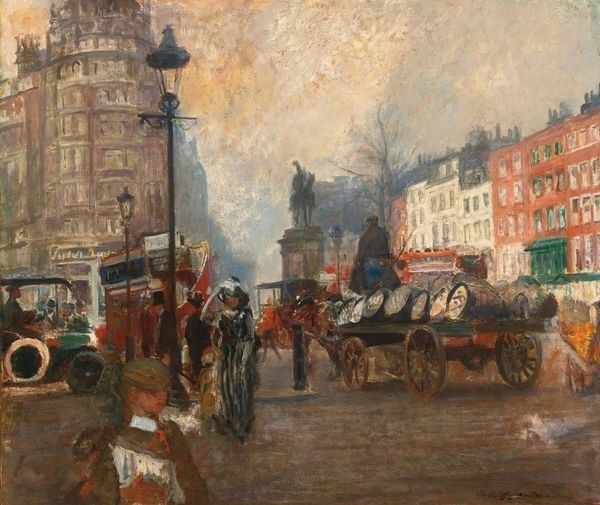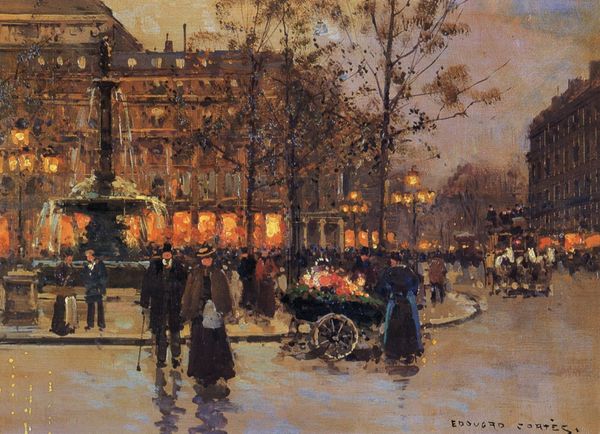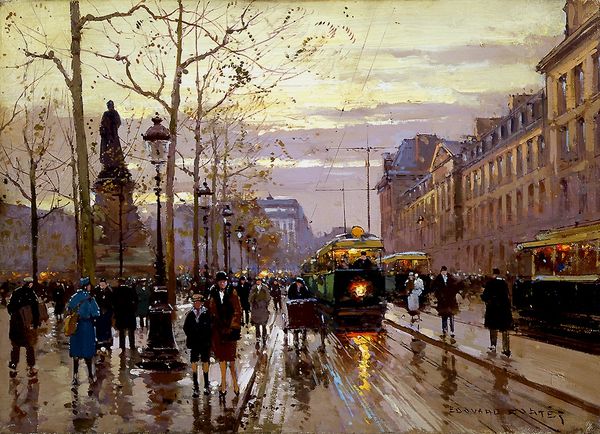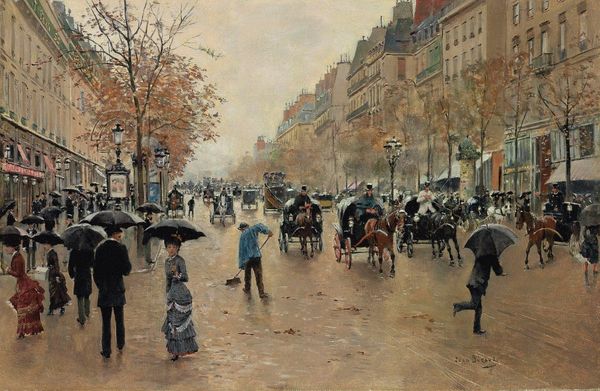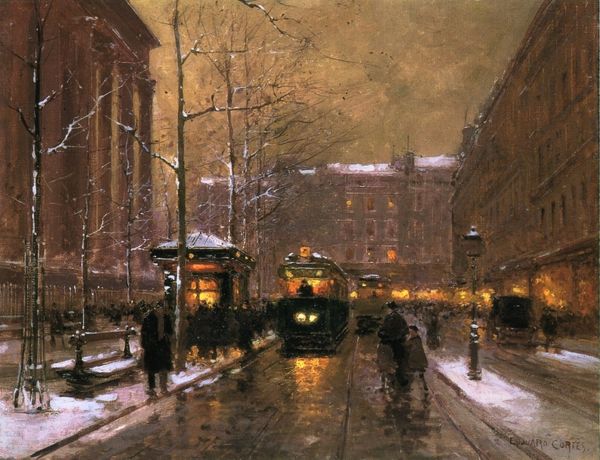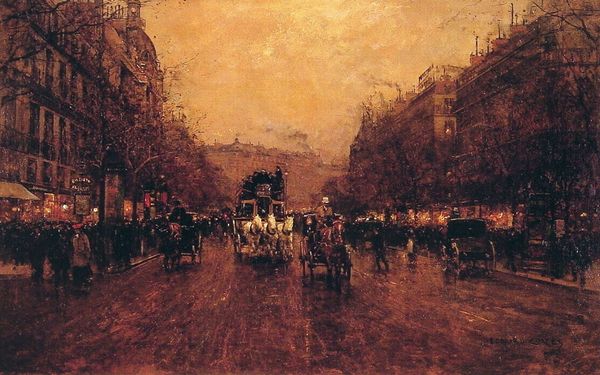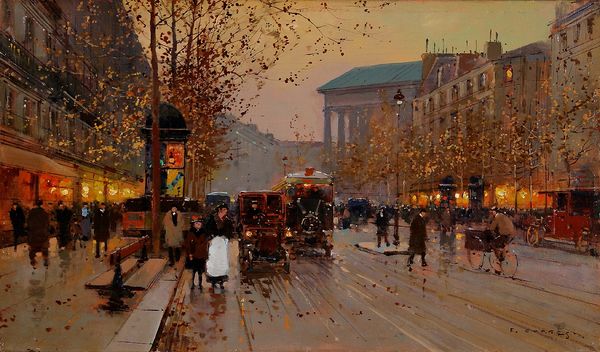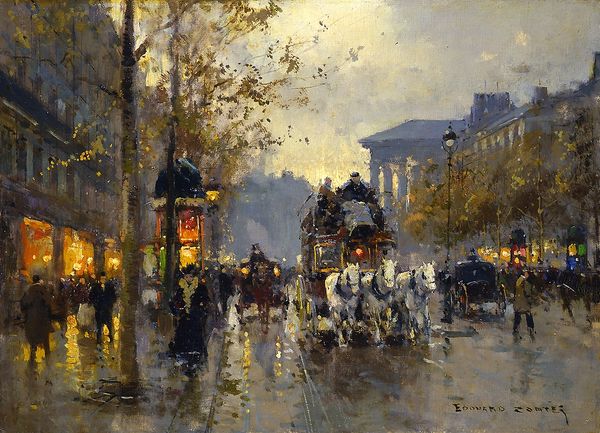
painting, oil-paint
#
portrait
#
painting
#
impressionism
#
oil-paint
#
landscape
#
charcoal drawing
#
oil painting
#
road
#
cityscape
#
street
#
realism
#
building
Copyright: Public domain
Editor: Here we have Childe Hassam's "Columbus Avenue, Rainy Day" from 1885, an oil painting that perfectly captures the atmosphere of a city street on a wet day. The muted colors and blurred figures really evoke a sense of movement and quiet solitude at the same time. As you study it, what stands out to you about Hassam's technique and overall composition? Curator: What arrests me immediately is the way the artist has structured this canvas around the repetition of vertical lines. Consider the figures of the pedestrians, the architectural elements of the buildings, and, crucially, the rhythm of the carriages. They punctuate the picture plane, and divide it geometrically. Do you perceive the effect created by such structuring? Editor: I do! It creates a sort of visual tempo, almost musical. It keeps your eye moving throughout the painting, while also lending it a strange kind of harmony. It's not chaotic like a busy city street should be. Curator: Precisely. Note too how the light itself is treated. Reflected and refracted across wet surfaces, light here seems almost tangible, substantial. The colour palette is reduced, but not impoverished. Observe how the varying tones of gray and brown, coupled with a restricted range of greens, create an effect of unified optical sensation. Do you agree that the success of the work inheres primarily in these formal qualities? Editor: It makes sense. Paying attention to brushstrokes and colour relationships clarifies how impactful Impressionism really is. Thanks for this helpful insight, looking at it this way helped make connections between things I hadn’t realized before! Curator: Indeed. Through close observation and formal analysis, we can arrive at a deeper understanding of not only the artwork itself, but also the aesthetic principles that guide its creation.
Comments
No comments
Be the first to comment and join the conversation on the ultimate creative platform.
